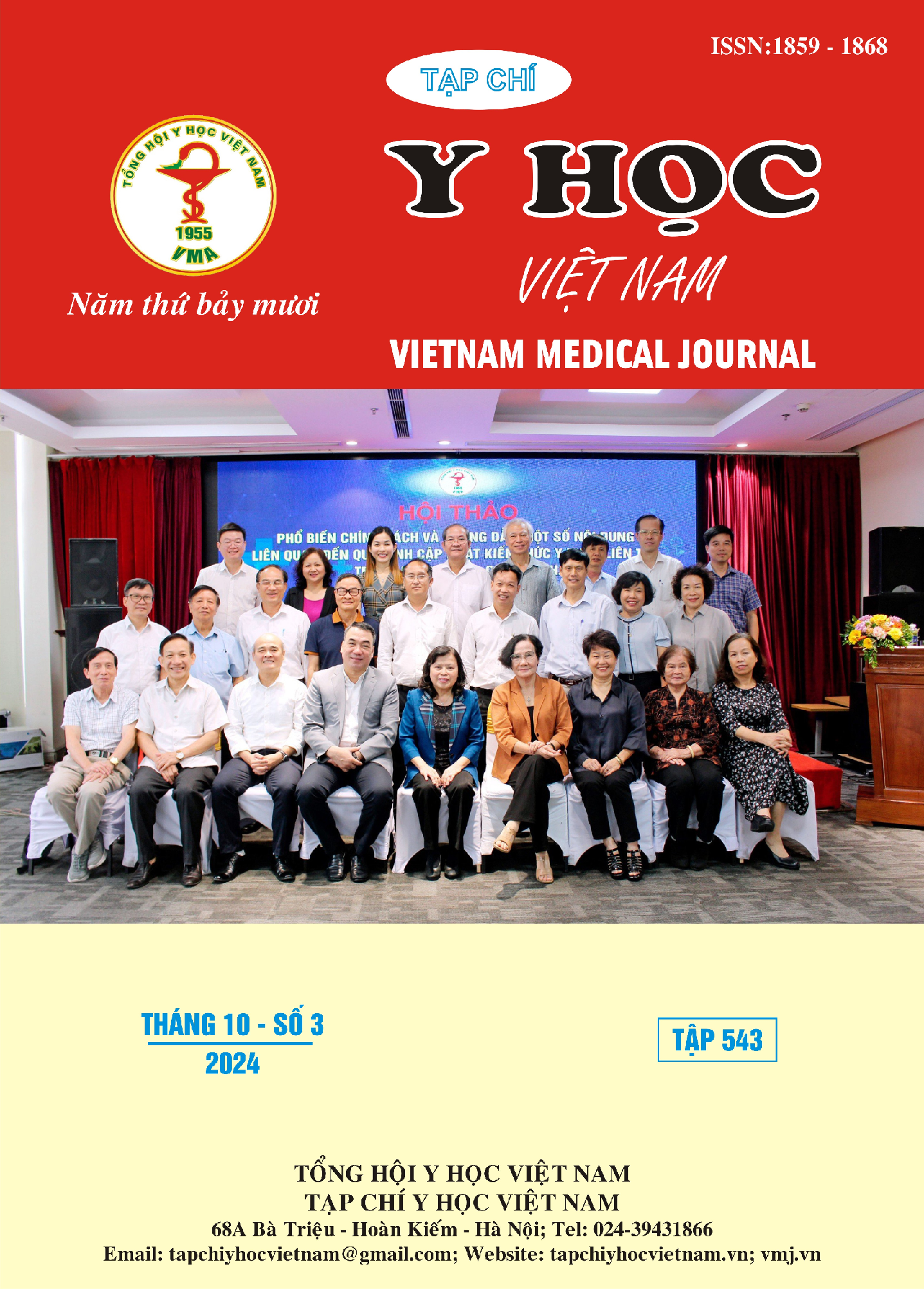CLINICAL FEATURES AND IMAGING DIAGNOSIS IN PATIENTS WITH THORACOLUMBAR SPINAL INJURIES TREATED WITH FIXATION AT VIET DUC HOSPITAL
Main Article Content
Abstract
Objective: To describe the clinical and paraclinical characteristics of patients with thoracolumbar spinal injuries who underwent surgical spinal fixation at Viet Duc University Hospital. Methods: This retrospective descriptive study included 68 patients with thoracolumbar spinal injuries who underwent spinal fixation surgery in the Spine Surgery Department of Viet Duc Hospital from January 2021 to January 2024. Results: Among the 68 patients in our study, the female-to-male ratio was 2.4:1, and the average age was 65.2 ± 7.2 years. The main cause of injury was domestic accidents, accounting for 44.1%, and the time of injury was often over 3 months, accounting for 55.9%. There were 42 patients who were examined after the injury, and 21 patients were advised for immediate surgery, making up 50%. Twenty patients used a corset, accounting for 47.6%. Osteoporosis was detected in 39 patients before the injury, but only 24 patients received treatment for osteoporosis, accounting for 61.5%. Nineteen patients used corticosteroids, accounting for 14.7%. Among the 68 study patients, all (100%) experienced thoracolumbar spinal pain, and 33 patients had neurological injuries, accounting for 48.5%, mainly at mild and moderate levels. Seven patients had urinary retention, accounting for 14.7%, and 60 patients used analgesics without relief, accounting for 88.2%. The average preoperative VAS score was 7.8 ± 1.3. The average ODI score was 70.4 ± 6.2%. Twenty-one patients were assessed with the TLIC score, with an average score of 6.2 ± 1.2. The average T-score of the patients was -3.6 ± 0.8. On X-rays, the average vertebral body compression angle was 26.9° ± 4.2°, and the regional kyphosis angle was 27.8° ± 3.3°. On CT scans, 44 vertebrae had posterior wall damage, accounting for 50.6%, and 29 vertebrae had spinal canal stenosis over 30%, accounting for 65.9%. On MRI, 23 patients had a complete rupture of the posterior ligamentous complex (PLC). Conclusion: The prominent clinical symptom of patients with thoracolumbar spinal injuries is spinal pain, which may be accompanied by neurological damage, mainly at a moderate level. On X-rays, patients showed spinal kyphosis with increased regional kyphosis and vertebral body compression angles. MRI can show soft tissue damage, particularly in the posterior ligamentous complex (PLC).
Article Details
Keywords
Thoracolumbar spinal injury, osteoporosis.
References
2. Nguyễn Thái Hoà, khảo sát tỉ lệ gãy xương đốt sống và các yếu tố liên quan trên bệnh nhân loãng xương cao tuổi. 2019, Tạp chí y dược học Cần Thơ - số 22-23-24-25/2019
3. Pinar Kuru, et al (2014), “Fracture history in osteoporosis: Risk factor and its effect on quality of life” https://www.ncbi.nlm.nih.gov/ pmc/ articles/P MC4318399/
4. LeBlanc C.M, Ma J, Talijaard M, Roth J, Scuccimart R, Miettunen P. “Incident vertebral fractures and risk factors in the first three years following glucocorticoid initation among pediatric patients with rheumatic disorders”. J Bone Miner Res. 2015;30:1667-1675
5. James S.Harop, et al, “Primary and secondary osteoporosis incidence of subsequent vertebral compression fractures after kyphoplasty”. 2004, Spine J 29, 2120-2125


